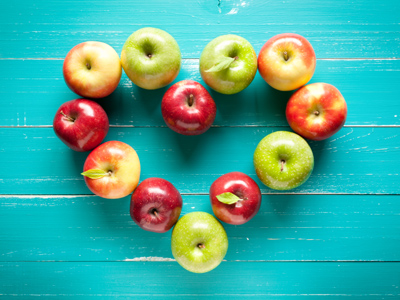In middle school you'll learn a little bit about the heart in basic anatomy and how it related to the circulatory system. In this quiz we take a closer look at the heart and its parts.
As a quick refresher, the heart is a muscle. It is also the control center of the body’s entire circulatory system. It has two main functions. To take in blood that has been deoxygenated and to then pump oxygenated blood back through the entire body. The heart is constantly working to circulate 4½ liters of blood (equal to about 2,000 gallons) each and every day.
The heart itself is divided into two main sections. Each section is then divided into two chambers for a total of four chambers.
These chambers are the right atrium and right ventricle located on the right side of the heart and the left atrium and the left ventricle that are located on the left side of the heart.
The right atrium is located in the upper right area of the heart. It receives deoxygenated (oxygen starved) blood from both the inferior vena cava and the superior vena cava.
The left atrium is located in the upper left area of the heart and it receives oxygen-rich blood from the lungs through the pulmonary vein.
The right ventricle is located in the lower half of the right side of the heart and it pumps blood into the pulmonary artery.
The left ventricle is located in the lower left side of the heart and it pumps blood through the aortic valve into the aorta.
While the heart pumps blood, it is the blood vessels that really carry the blood throughout the body and then back to the heart in a cycle. Blood vessels include arteries, veins and capillaries.
Arteries carry blood away from the heart while veins carry the blood back into the heart. Capillaries are small tube-like structures that connect the veins to the arteries and it is through the capillaries that nutrients and oxygen are delivered to each cell of the body. The capillaries also remove waste from the blood such as carbon dioxide.
Besides the blood vessels and chambers, there are many other parts that connect the heart and assist it in performing its job. These parts include the following:
Aorta: The aorta is the biggest and strongest artery in the body. Its purpose is to carry oxygen-rich blood from the left ventricle of the heart to the body.
Inferior Vena Cava: This is a large vein that carries deoxygenated (oxygen starved) blood to the right atrium from the lower half of the body.
Superior Vena Cava: This is a large vein that carries deoxygenated blood to the right atrium from the upper half of the body.
Mitral Valve: The mitral valve is located between the left atrium and the left ventricle. Its purpose is to prevent the back-flow of blood from the ventricle to the atrium.
Pulmonary Artery: The pulmonary artery carries deoxygenated (oxygen starved) blood from the right ventricle of the heart to the lungs.
Pulmonary Valve: The pulmonary valve is a flap that is located between the right ventricle and the pulmonary artery. When the ventricle contracts, the valve opens and lets blood rush into the pulmonary artery. When the ventricle relaxes, the valve closes and prevents the blood from rushing backward into the right atrium.
Pulmonary Vein: The pulmonary vein carries oxygen-rich blood from the lungs to the left atrium of the heart.
Septum: The septum is the muscular wall that separates the left and right sides of the heart.
Tricuspid Valve: The tricuspid valve is a flap that lies between the right atrium and the right ventricle. It is made up of three leaf-like parts that prevent the back-flow of blood from the ventricle to the atrium.
We often take for granted all of the hard work that goes on with our heart. It’s one mean machine and it needs to be helped by having good eating habits, exercise and plenty of sleep.
There are a lot of parts and vocabulary terms that may be new to you so read over this introduction a few times to become more familiar and comfortable with all of the terms. When you are ready, proceed to the questions and see if you can find the right answers!








